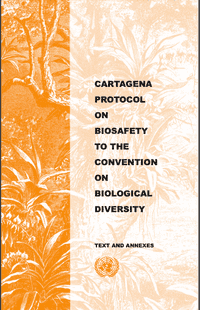
Languages: Arabic, English, Spanish... (6)
Cartagena Protocol on Biosafety to the Convention on Biological Diversity
[Cartagena Protocol]
The Cartagena Protocol on Biosafety is a protocol that governs the movement of genetically modified organisms (GMOs) from one country to another. It aims to ensure that countries have the necessary information to make informed decisions about importing GMOs.
SUMMARY
The Cartagena Protocol on Biosafety is a protocol of the Convention on Biological Diversity that governs the movement of genetically modified organisms (GMOs), known in the text of the protocol as living modified organisms (LMOs), from one country to another. The protocol entered into force in September 2003, and aims to protect biological diversity from potential harm posed by GMOs. It established an advance informed agreement (AIA) procedure that ensures that countries have the necessary information to make informed decisions about importing GMOs. It also established a Biosafety Clearing House to facilitate the exchange of information on GMOs.
The Convention on Biological Diversity, which entered into force in December 1993, is an international treaty with three main goals: 1. Conservation of Biodiversity, 2. Sustainable use of the components of biological diversity, and 3. The fair and equitable sharing of the benefits arising out of the utilization of genetic resources. The Convention is governed by the Conference of Parties that meets once every two years to discuss relevant conservation issues. The Convention has two protocols, the Cartagena Protocol and the Nagoya Protocol.

..png)
